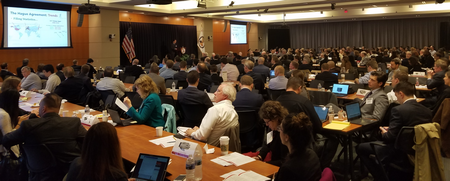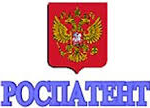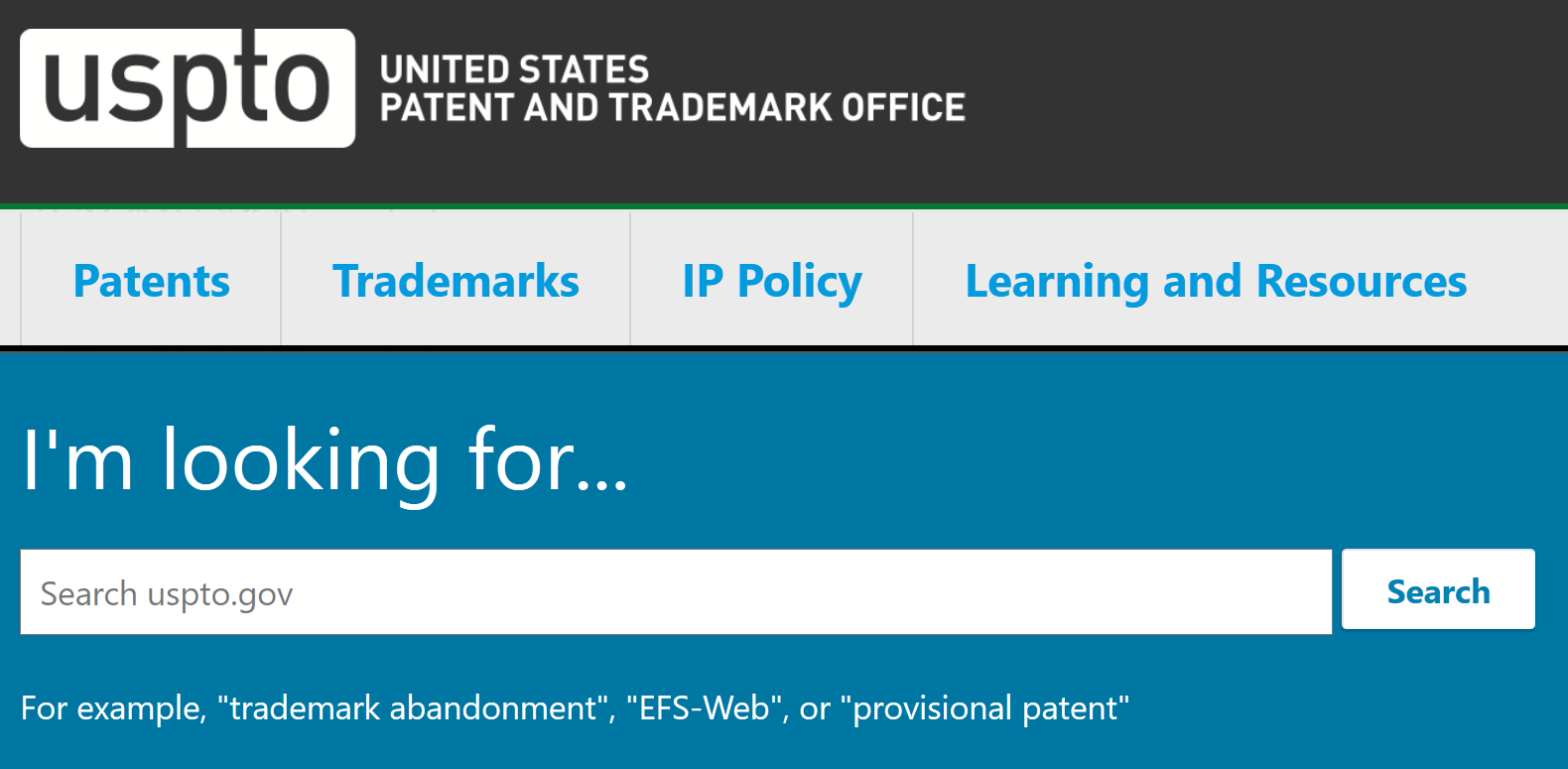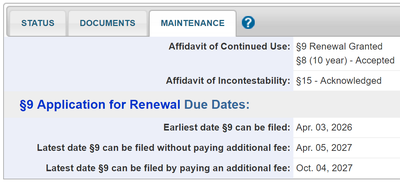 Those who, like me, often record assignments at the USPTO are accustomed to the steps that are required to e-file in EPAS (electronic patent assignment system) and ETAS (electronic trademark assignment system). The steps include identifying the assignor and the assignee, and then comes the step of entering the properties for which the assignment is being recorded. I am delighted to be able to report that USPTO has made this very user friendly for an assignment that applies to many properties. Continue reading “USPTO provides a nice user feature in EPAS and ETAS”
Those who, like me, often record assignments at the USPTO are accustomed to the steps that are required to e-file in EPAS (electronic patent assignment system) and ETAS (electronic trademark assignment system). The steps include identifying the assignor and the assignee, and then comes the step of entering the properties for which the assignment is being recorded. I am delighted to be able to report that USPTO has made this very user friendly for an assignment that applies to many properties. Continue reading “USPTO provides a nice user feature in EPAS and ETAS”
Backwards progress at USPTO
 I have blogged here (in 2015) and here (in 2014) about the need for USPTO to implement SSL (secure sockets layer or “https://”) on all of its external-facing web sites. I have reminded the USPTO that there is an executive order from the White House directing all US government agencies to do this. USPTO was very slow to comply, but has made some progress. One of the last web sites that USPTO managed to migrate to SSL was the Public PAIR web site.
I have blogged here (in 2015) and here (in 2014) about the need for USPTO to implement SSL (secure sockets layer or “https://”) on all of its external-facing web sites. I have reminded the USPTO that there is an executive order from the White House directing all US government agencies to do this. USPTO was very slow to comply, but has made some progress. One of the last web sites that USPTO managed to migrate to SSL was the Public PAIR web site.
Recently came the disappointing news that USPTO made plans to roll back the functionality of the Public PAIR web site. In a posting on April 3, 2017, USPTO said:
The USPTO will be performing maintenance on the Public Patent
Application Information Retrieval (Public Pair) beginning at 12:01
a.m., Friday, April 21 and ending at 2 a.m., Friday, April 21 ET.
During the maintenance period, Public PAIR will be unavailable.
Immediately after the maintenance, users will only be able to access
Public PAIR through URLs beginning with HTTP, such as
https://portal.uspto.gov/pair/PublicPair. Past URLs using HTTPS to
access Public Pair, such as
https://portal.uspto.gov/pair/PublicPair, will no longer work.
Now comes an announcement on April 24, 2017:
HTTPS access to Public PAIR
The USPTO’s public facing legacy systems, such as Public PAIR, were not designed to support HTTPS protocol. The agency has worked hard to enhance these legacy systems to support HTTPS. Following the agency’s April 11, 2017 deployment of HTTPS to Public PAIR, some public users reported errors accessing Public PAIR. A decision was made to back-out the new HTTPS capability while the agency investigated a resolution to the issue. We expect to implement a fix and restoration of the HTTPS protocol in the next few weeks. The USPTO is sorry for any inconvenience.
There’s just no excuse for this. People who administer web sites are well aware that there are off-the-shelf solutions for adding SSL functionality to any legacy web site. There are modestly priced commercial boxes (simple boxes that you connect between the web server and the Internet) to do this. For those who cannot afford a modestly priced commercial solution, there are off-the-shelf open-source solutions that run on a simple inexpensive Linux box. These solutions do not require any modification to the legacy system, and they do not slow down the user access data rates.
Let’s hope USPTO does a Google search or two and learns how to do this.
Design Day is happening
 Design Day 2017 is taking place right now at the USPTO in Alexandria, Virginia. The room is packed, with people sitting around the edge of the room because all of the tables are occupied. David Gerk is speaking right now.
Design Day 2017 is taking place right now at the USPTO in Alexandria, Virginia. The room is packed, with people sitting around the edge of the room because all of the tables are occupied. David Gerk is speaking right now.
An opportunity to save money on a PCT search fee
 As I mentioned in a blog post on March 17, the search fee that a a US PCT filer would pay for the Russian patent office will increase on May 1, 2017. The search fee, presently $449, will increase to $482.
As I mentioned in a blog post on March 17, the search fee that a a US PCT filer would pay for the Russian patent office will increase on May 1, 2017. The search fee, presently $449, will increase to $482.
This offers an opportunity to save a little money. If you are a US filer, and you were thinking about filing a PCT application in which you choose ISA/RU, and you were thinking of filing the PCT application on May 1, just file it instead a day early on April 30. This will save $33 in fees.
hosting multiple WordPress sites on one Synology box
I’ve worked out how to host multiple WordPress sites on a single Synology box. You can read the how-to article here. Please post comments and suggestions and corrections in the comments below.
USPTO removes suggestion of “provisional patent” from its web site
You may recall my blog post of March 25, 2017 entitled “USPTO thinks there is such a thing as a “provisional patent”?” I wrote:
It will be interesting to see if, after the posting of this blog article, the USPTO revises its home page to delete the mention of a “provisional patent”.
| Here is the front page of the USPTO web site before my blog post: |  |
| Here is how the USPTO revised the front page after my blog post: |  |
TSDR Maintenance tab is back!
 The very handy “maintenance” tab in TSDR that had been missing for the past year or so … the very welcome and good news is that this “maintenance” tab is back! Continue reading “TSDR Maintenance tab is back!”
The very handy “maintenance” tab in TSDR that had been missing for the past year or so … the very welcome and good news is that this “maintenance” tab is back! Continue reading “TSDR Maintenance tab is back!”
Oddity about making a patent application “special”
A couple of years ago I taught a webinar called Get Patents Fast! The point of this webinar was to enumerate and compare and contrast the various initiatives at the USPTO for getting a patent fast.
Last week a colleague at a New England patent firm asked if she could get her patent application made “special” by filing a petition under 37 CFR § 1.102 showing that the invention would “contribute to the … conservation of energy resources.” She’s right that Rule 102 says that you can do that. But as it turns out, you can’t really do that, as I will explain. Oddly, in a few months it may once again be possible to do that, as I will also explain. Continue reading “Oddity about making a patent application “special””
Whither Accelerated Examination?
As I mentioned in a February 18, 2017 blog post, USPTO has proposed to scrap the Accelerated Exam (AE) program (see the January 12, 2017 Federal Register notice). There’s an oddity about how the USPTO went about implementing AE in the first place that means that scrapping AE would have a peculiar consequence, namely to bring back three ways of making applications “special” that had been unavailable (from a practical point of view) for the past decade. I will explain. As best I can see, nobody at the USPTO, nor any of the handful of commenters in response to this Federal Register notice, has thought about this peculiarity. Continue reading “Whither Accelerated Examination?”
Four seats left for Denver trademark roundtable
There are four seats left for the USPTO trademark roundtable in Denver on Friday, April 21. This is a unique opportunity to talk face-to-face with important people from the trademark office at the USPTO, including:
- Meryl Hershkowitz, Deputy Commissioner for Trademark Operations, and
- Wendy Cohen, Interlocutory Attorney, Trademark Trial and Appeal Board.
You will also get to meet important people from the Denver regional patent office, including Molly Kocialski, the Director of the office.
For more information, see the USPTO web site page for the roundtable here. Don’t get left out. Register today.
